Lighting Guide
Inside Stories’ guide to everything lighting!
Ambient Lighting:
Ambient lighting is the foundation of any interior lighting scheme as it’s the main light source that illuminates a space and allows you to see clearly. This can include natural lighting from windows or skylights, overhead lighting like chandeliers, or track lighting that’s integrated into your ceiling. Ambient lighting’s main purpose is to provide a space with uniform levels of illumination completely independently from other lighting sources.
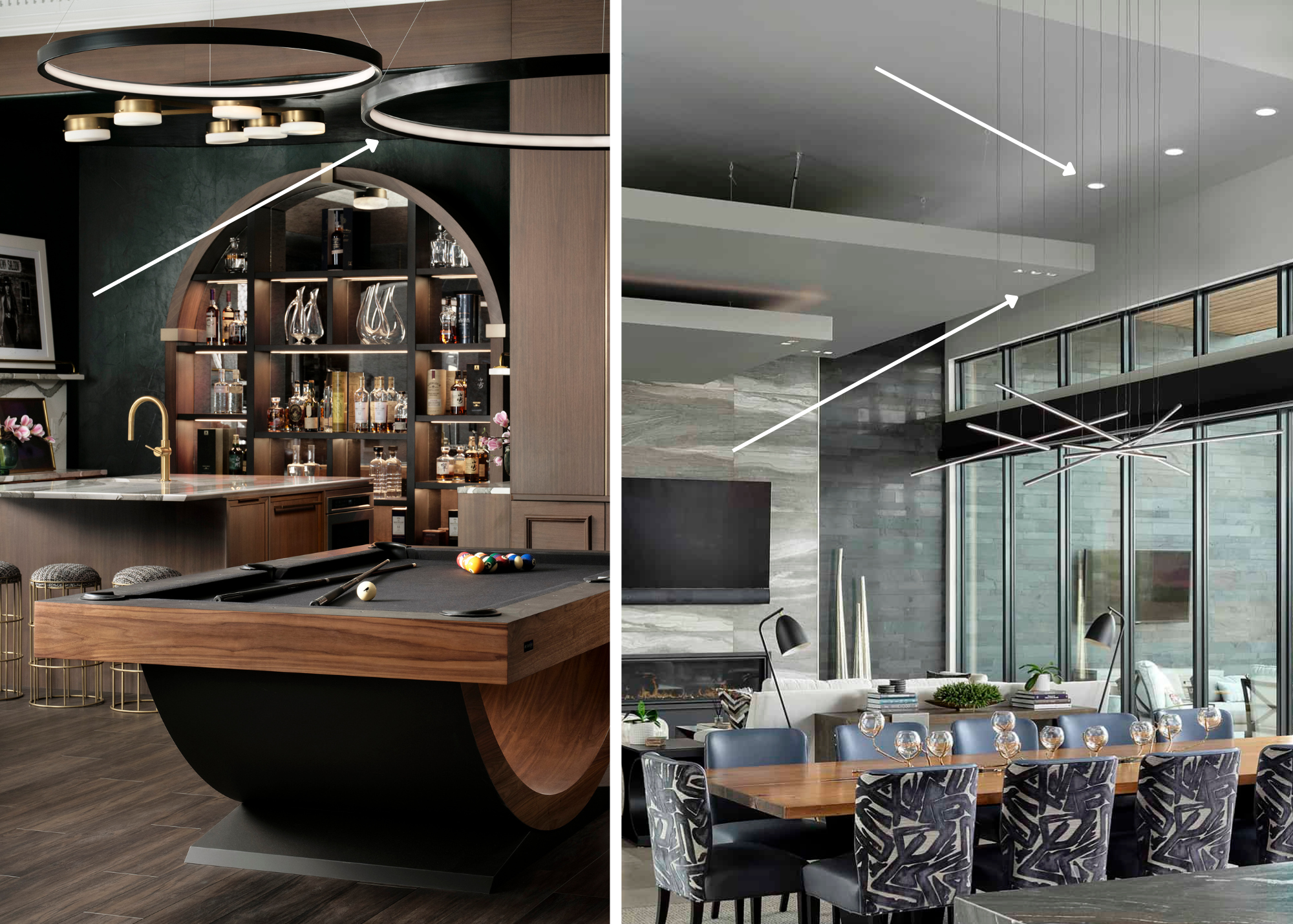
Types:
– Windows/skylights
– Ceiling mounted fixture
– Wall-mounted fixture
– Traditional recessed fixtures and / or LED downlights
– Track light
– Floor lamp
How to use it:
– Apply ambient lighting to every room in your home
– Install closer to the ceiling for maximum effect
– As a general rule of thumb, centralizing your ambient lighting is most effective as a base line for your lighting design
– Un-obstruct windows or use sheer curtains to enhance natural lighting
Task Lighting:
Task lighting helps with specific activities like reading, cooking, and working. This kind of lighting is best to use on a smaller scale in a way that’s integrated into a space. For instance, you will often find task lighting in a kitchen design under the cabinetry so that when it’s turned on, the countertop workspace will be illuminated. Task lighting can also be implemented through the use of lamps, wall sconces, and pendants.
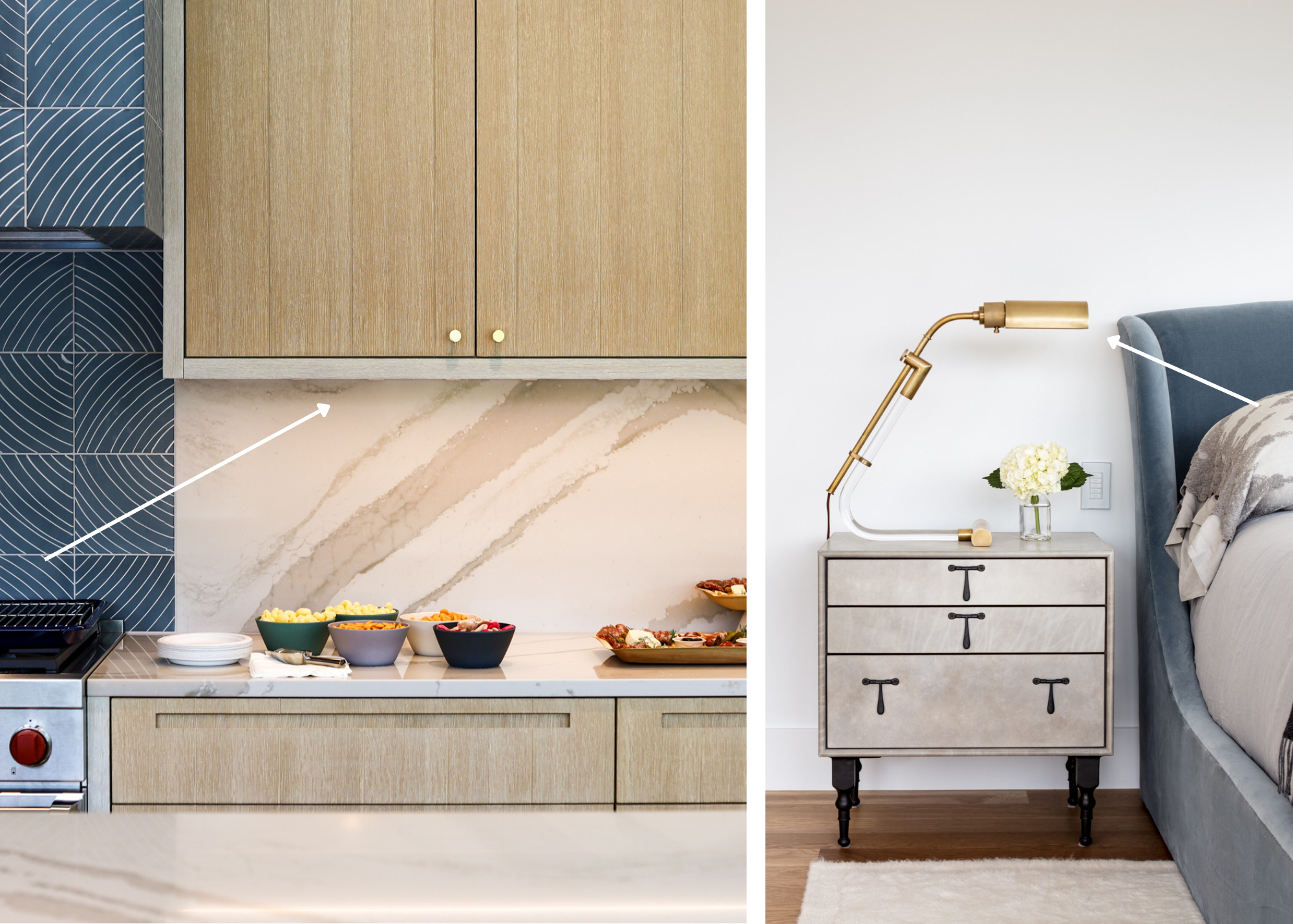
Types:
– Integrated
– Lamps (desk, floor)
– Sconces
– Pendants
– Recessed fixtures
– Downlighting
How to use it:
– Study or office: Desk lamps
– Kitchen: Under cabinets
– Bedroom: Reading lamps
– Bathroom: Vanity lighting
Accent Lighting
Similar to task lighting, accent lighting has a particular function which is to highlight certain features in a room. Accent lighting helps spaces appear bigger and draws your eyes to certain areas of a space. This lighting really allows certain design elements to shine such as entryways, artwork, or fireplaces.
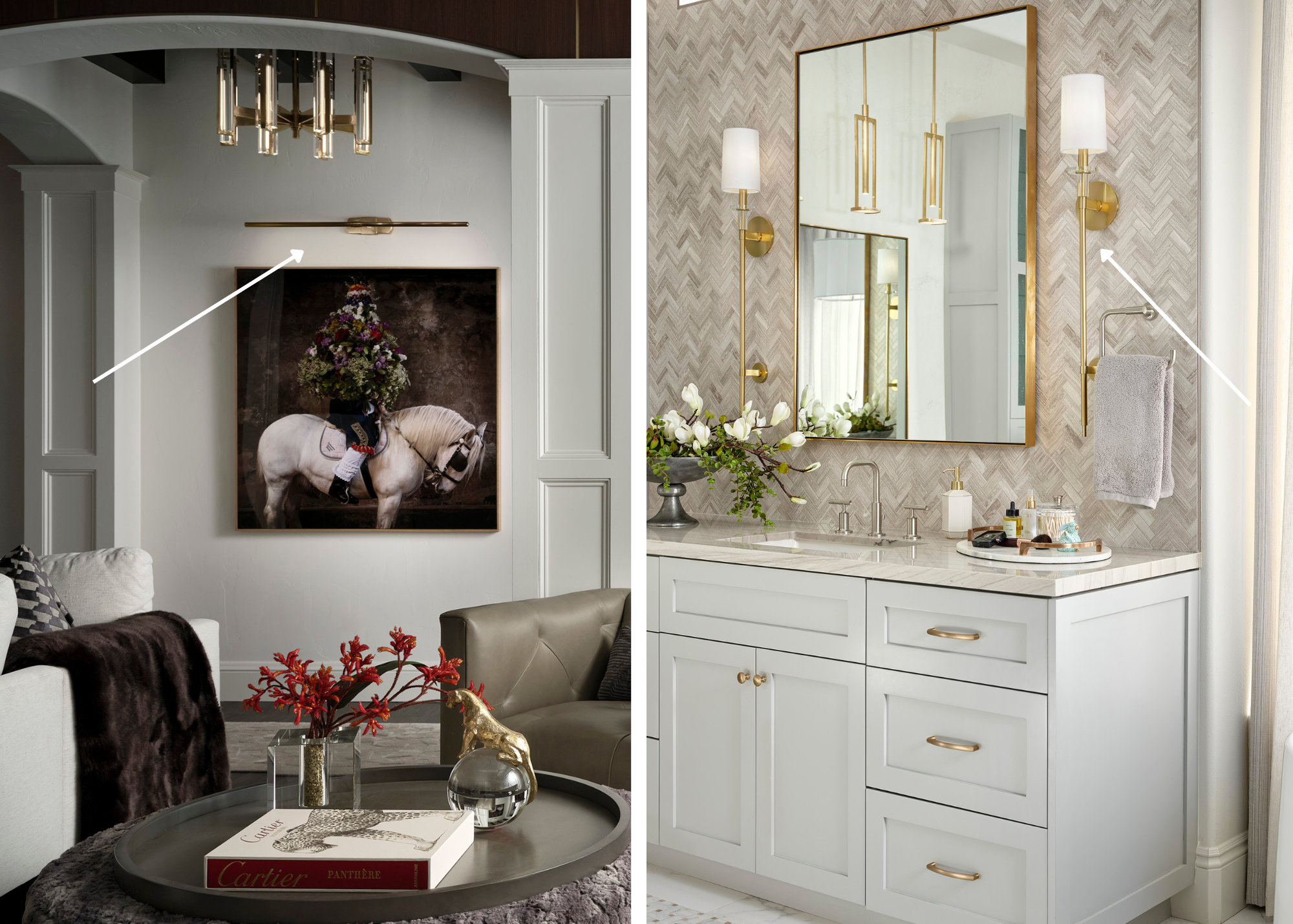
Types:
– Track lighting
– Cove lighting
– Wall sconces
– Picture lights
– Cabinet lighting
– Wall washers
– Lamps
How to use it:
– Use accent lighting to highlight certain areas of your room design (artwork, architecture, etc)
– Consider elements of your room design that you would like to highlight through your lighting when applying it to your space
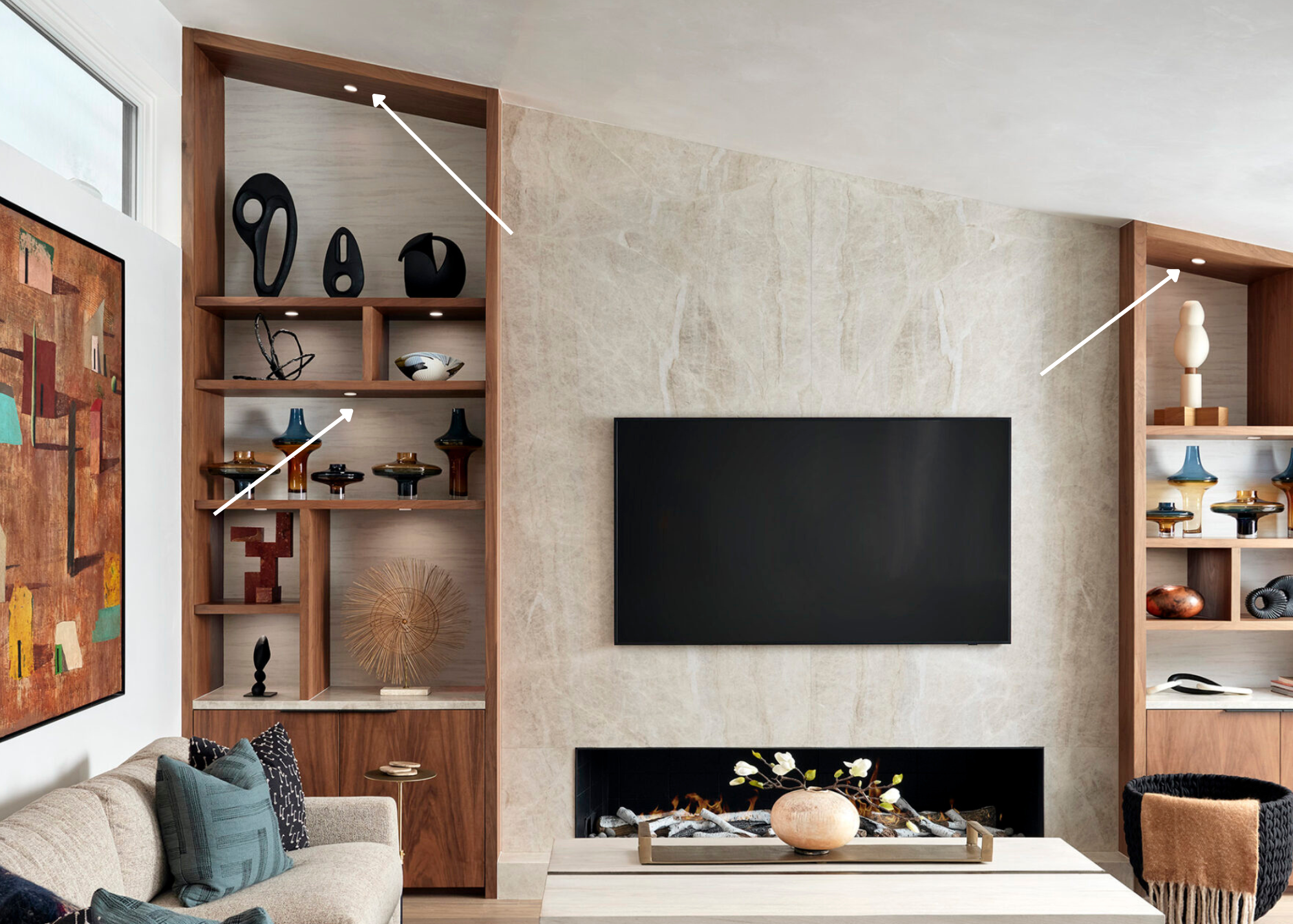
Decorative Lighting:
Decorative lighting is less about illumination and more about adding style and character in a space. We think of these kinds of light fixtures as the “icing on the cake” when completing a design.
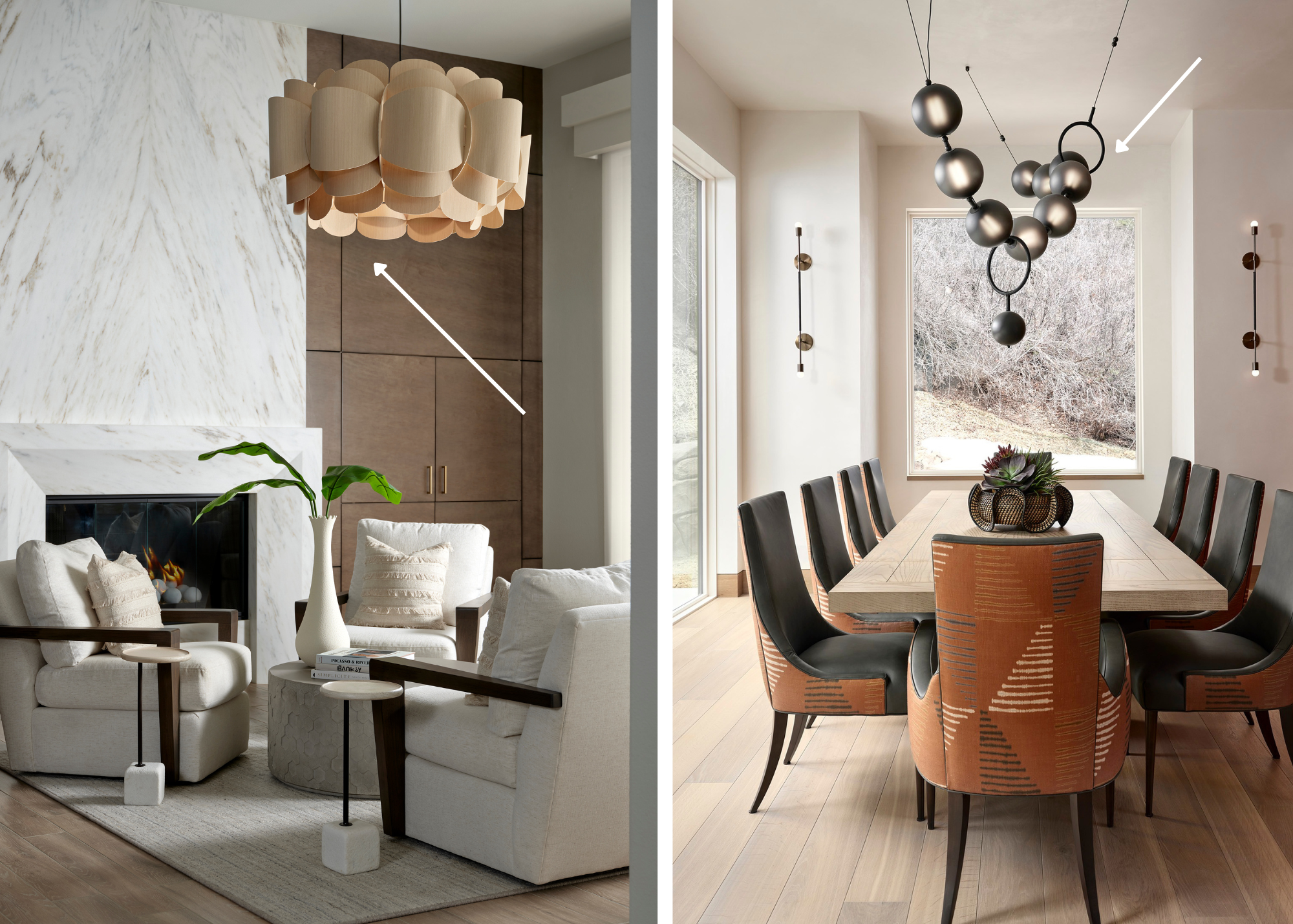
Types:
– Wall sconces
– Chandeliers
– Pendant lights
How to use it:
– Wall sconces on either side of a bed
– A chandelier over the middle of a dining room table
– Utilize in your front entry to add drama to the entrance of your home
Mood Lighting:
Mood lighting is what you turn on when you are winding down for the night or setting the scene for an evening dinner party. This lighting is intended to make a room pleasantly inviting by creating pools of light which counteract the shadows caused by general lighting. When implementing mood lighting it’s important to layer it with the other lighting in the space. This kind of lighting is a great addition to a design but shouldn’t be the only source of lighting.
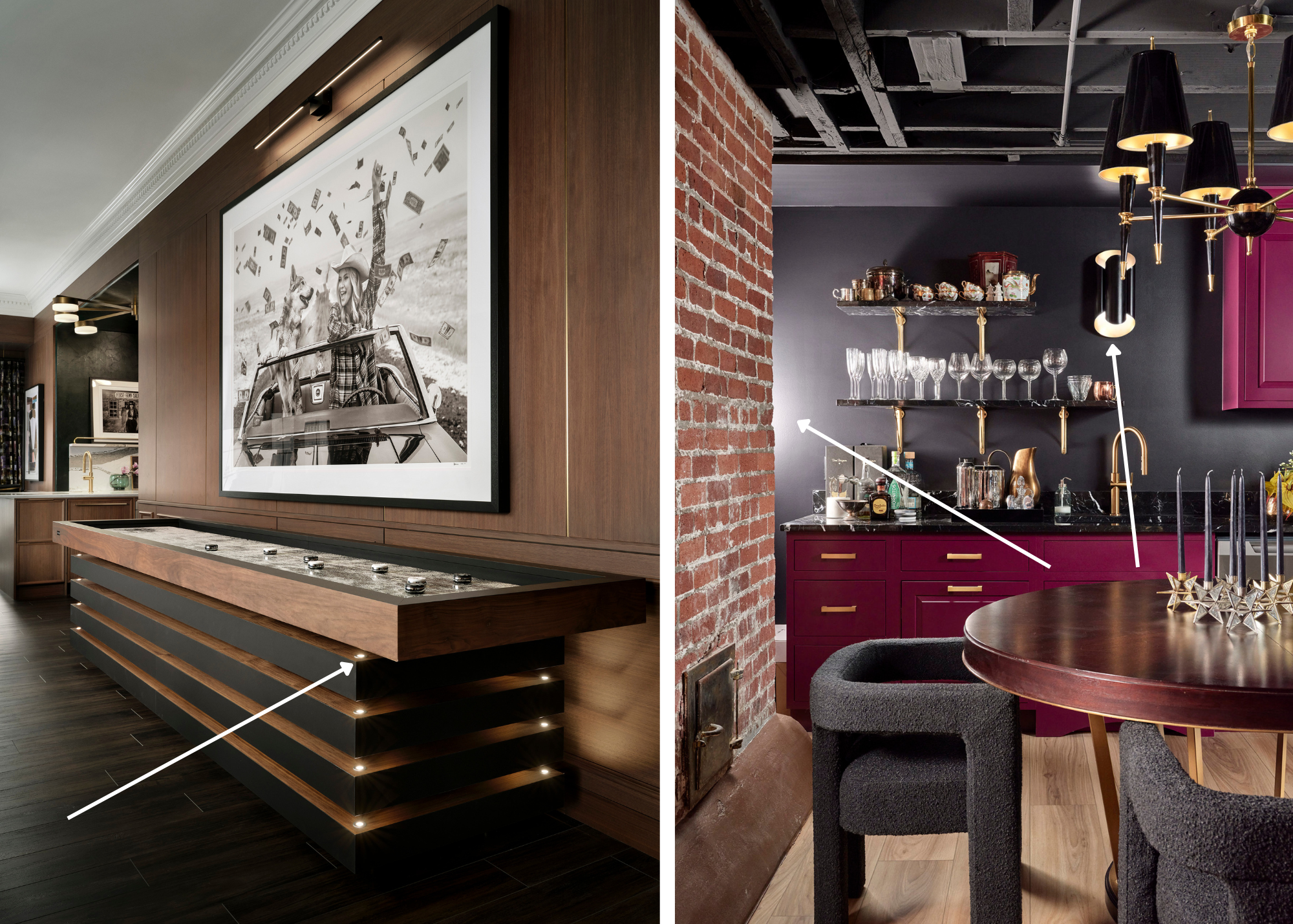
Types:
– Adjustable lighting
– Sconces
– Lamps
– Integrated lighting
How to use it:
– Utilize adjustable bulbs with varying brightness
– Select warmer toned bulbs to create a softer, more diffused light